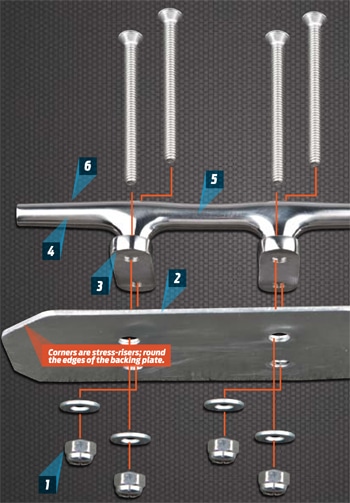Adding cleats to your boat? Assessing the quality of cleat installation aboard a boat you’re considering for purchase? Here’s what to look for.

1. Fastening
Cleats should always be through-bolted with locknuts and washers. Though screws are nearly as tough on axial loads, there is often a vertical component to the pull on boat cleats.
2. Backing
A backing plate spreads the load and minimizes the chance of stress cracks in the deck.Choose ‘glassed plywood or sheet fiberglass (like “G-10”) or cut and stack sheet aluminum to attain sufficient thickness.
3. Deck
Cleats installed aboard boats with plywood-core decks, or decks in which backing material is laminated in place, can forgo a backing plate.
4. Material
The best cleats are made of aluminum, stainless steel or bronze. Plated “white-metal” hardware has no place aboard. For small boats, or belaying accessories like flag halyards, plastic cleats are acceptable.
5. Size
Cleats should be sized to accept at least two lines of the appropriate diameter for your boat.
6. Pattern
The cleat shown with its narrow-waist horn and four-bolt feet was designed by Nathanael G. Herreshoff in 1890. It helps the line snug up and mounts robustly, and its rounded form minimizes chafe potential.









